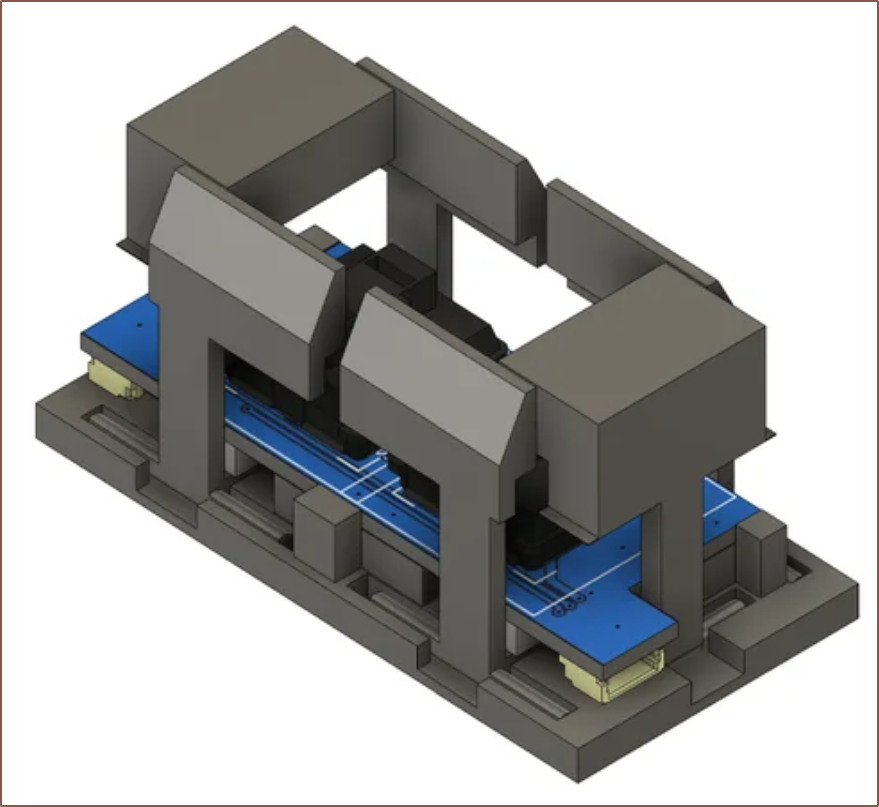Over 2 weeks ago, I discovered r/PeripheralDesign, a subreddit that finds many atypical inventions and products under the umbrella of peripheral devices. Yesterday, I decided to scan through older posts for research and I found some notable projects:
Uncokeeb
This project is very notable due to the many similarities with Tetent, and was also made in the persuit of speed and an alternative to stenography.

What I'd call "input elements" is what the creator calls "modules", but it's used to select any one of the 26 english letters with a single finger. Side buttons (which are levers to real buttons) are used, so I'd imagine there's less of a risk of Repetative Strain Injury (RSI), unlike #Tetrinsic [gd0041] where the fingers predominantly slide up and down its length. The thumb has fewer keys, and since there's only 27 non-zero states available on the modules, punctuation is put on the end of the word. The character map can be seen here. Just as I plan to do, the fingers only move the distance of about 2 standard key spacings in their design.
u/bluesocarrot also listed the pros and cons of what they've managed to make. As predicted, the fact that the same letter is on each finger contributes to a low learning curve. On the other hand, due to the width of the modules, they need to stretch their hand out quite a bit, and the 27 states also makes it hard to adapt to non-english alphabets.
To me, the current #Tetrescent [gd0150] concept looks like the "iPhone 15" of this "iPhone 1" prototype; like if you got a bunch of people together to work on and iterate the Uncokeeb across a decade. Obviously, if there's an "iPhone 30" concept somewhere out there, I'd like to know about it. At the same time though, Tetrescent is still just a concept, and I've seen those iPhone 5 concept videos...
Palm Pro (link1, link2)
This is notable because I've been trying to find evidence of a keyboard in the past that sensed force. This keyboard is also wearable, but it's not a chorded keyboard.
This keyboard uses vibration motors to provide the haptic sensations required to use this kind of device, and it enforces that Tetrinsic needs to do the same to ensure fast and accurate typing.
Force sensitive resistors are used. The reason I haven't used them for Tetrinsic is partially to do with the ever-increasing length of sensing area, and the other reason was because I was thinking that It'll be hard to get precision since they're non-linear and not made to as tight of a tolerance as load cells.
 kelvinA
kelvinA
Discussions
Become a Hackaday.io Member
Create an account to leave a comment. Already have an account? Log In.